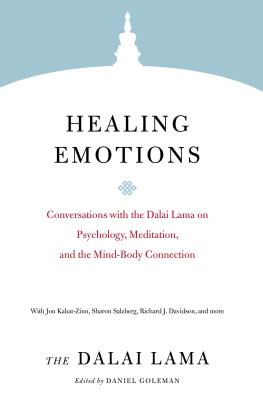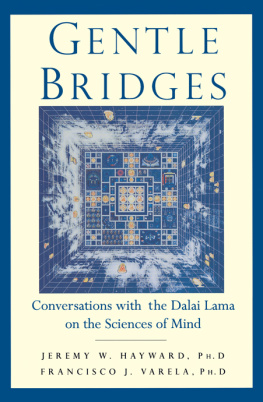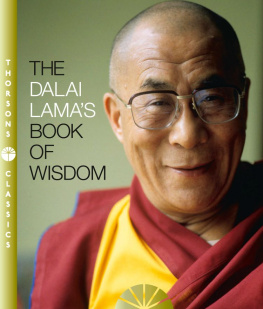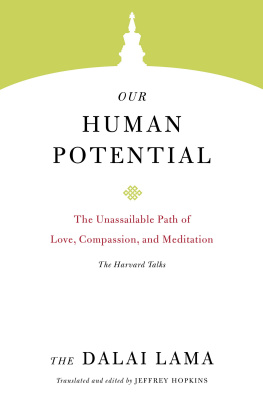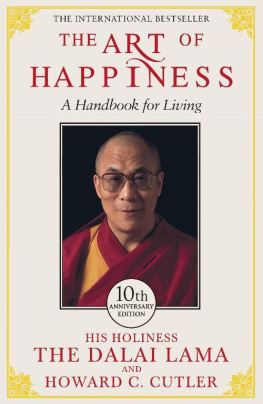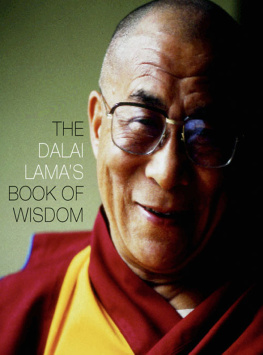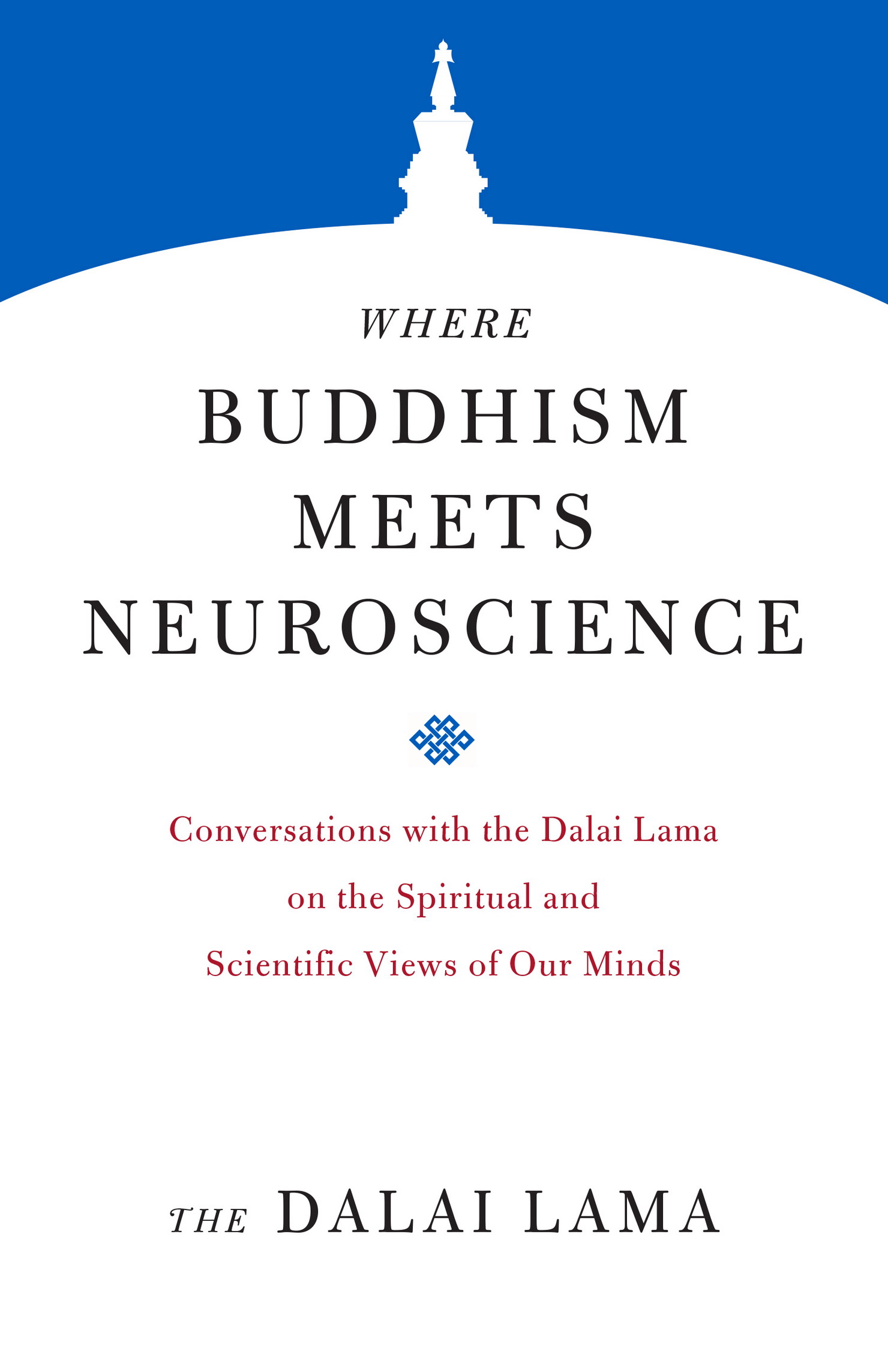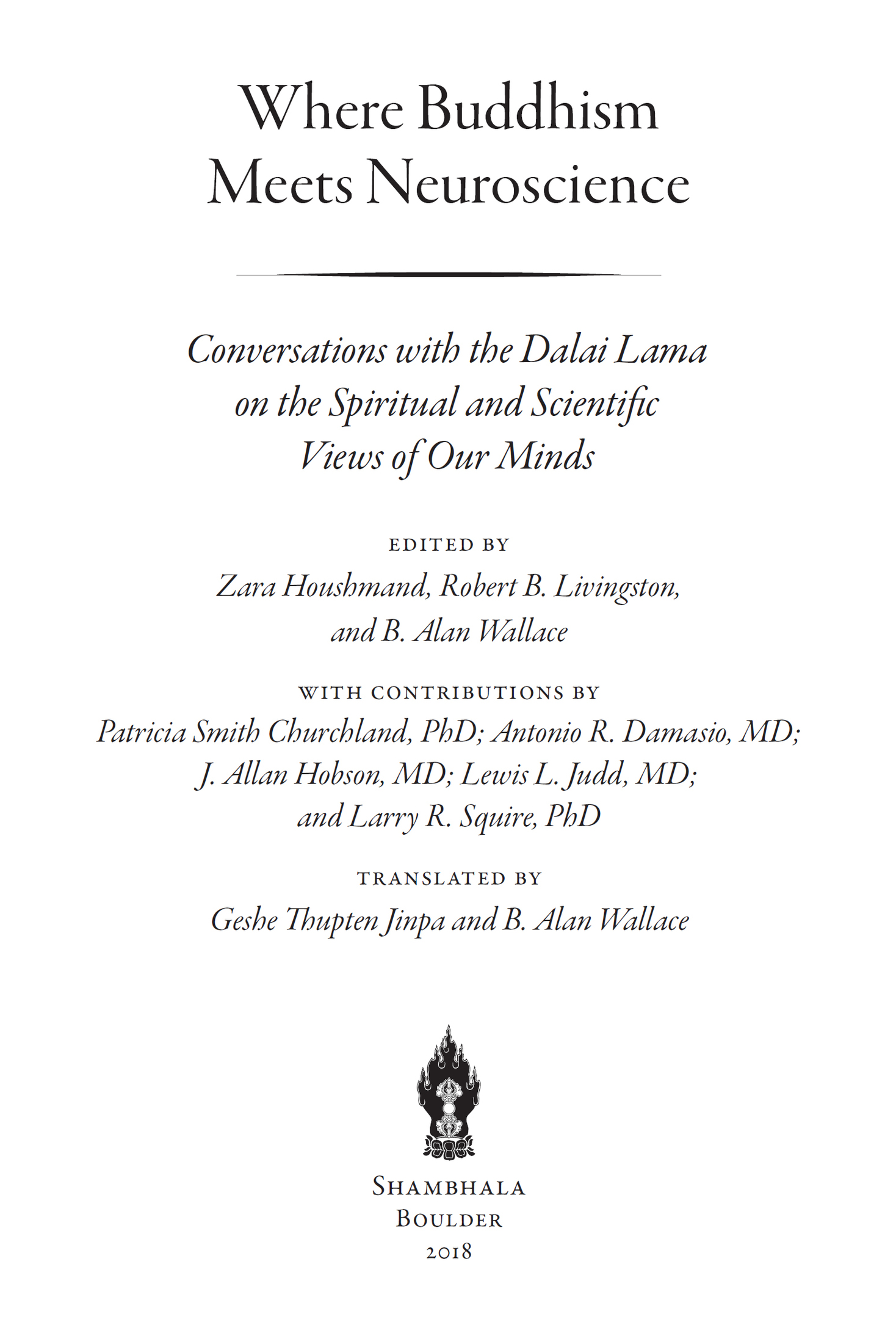Contents
Shambhala Publications, Inc.
4720 Walnut Street
Boulder, Colorado 80301
www.shambhala.com
1999 by the Mind and Life Institute
The book was previously published under the title Consciousness at the Crossroads.
All rights reserved. No part of this book may be reproduced in any form or by any means, electronic or mechanical, including photocopying, recording, or by any information storage and retrieval system, without permission in writing from the publisher.
Cover design by Claudine Mansour Design
Library of Congress Cataloging-in-Publication Data
Names: Bstan-dzin-rgya-mtsho, Dalai Lama XIV , 1935 author. | Houshmand, Zara, editor. | Livingston, Robert B. (Robert Burr), 19182002, editor. | Wallace, B. Alan, editor, translator. | Thupten Jinpa, translator. | Churchland, Patricia Smith. | Damasio, Antonio R. | Hobson, J. Allan, 1933 | Judd, Lewis L. | Squire, Larry R. | Mind & Life Institute.
Title: Where Buddhism meets neuroscience: conversations with the Dalai Lama on the spiritual and scientific views of our minds/edited by Zara Houshmand, Robert B. Livingston, and B. Alan Wallace; with contributions by Patricia Smith Churchland, PhD; Antonio R. Damasio, MD; J. Allan Hobson, MD; Lewis L. Judd, MD; and Larry R. Squire, PhD; translated by Geshe Thupten Jinpa and B. Alan Wallace.
Other titles: Consciousness at the crossroads
Description: Boulder: Shambhala, 2018. | Series: Core teachings of the Dalai Lama | Includes bibliographical references and index. | The book was previously published under the title Consciousness at the Crossroads.
Identifiers: LCCN 2018007116 | ISBN 9781559394789 (paperback)
eISBN 9780834841932
Subjects: LCSH : ConsciousnessReligious aspectsBuddhism. |
ConsciousnessPhysiological aspects. | BrainPsychophysiology. | BuddhismPsychology. | BISAC : RELIGION /Buddhism/Tibetan. | PHILOSOPHY /Buddhist. | SCIENCE /Life Sciences/Neuroscience.
Classification: LCC BQ 7935. B 774 W 49 2018 | DDC 294.3/3615dc23
LC record available at https://lccn.loc.gov/2018007116
v5.3.2
a
I NTRODUCTION
O N THE MORNING of October 5, 1989, history intruded unexpectedly into a private meeting between His Holiness the 14th Dalai Lama of Tibet and a small group of neuroscientists and psychiatrists. Leaders in their fields, they had come together to explore what insights the Western sciences of the mind and Buddhism might offer to each other. The second Mind and Life Conference was gathered at the Newport Beach home of Mr. and Mrs. Clifford Heinz, when a predawn phone call from Oslo announced that His Holiness had been awarded the Nobel Prize for Peace.
Considering how public awareness of the situation in Tibet has grown in the West in recent years, it is easy to forget how significant the Dalai Lamas Nobel Prize was at the time. After decades of international neglect, the award was an important turning point for the Tibetan cause, recognizing the Tibetan peoples long struggle against Chinese oppression as well as the Dalai Lamas commitment to a nonviolent resolution of the continuing conflict.
Shortly after the first phone call, other calls began coming in from the television networks. By seven oclock, His Holiness had made the decision to continue with the conference as scheduled, and two hours later the group convened. By the time His Holiness entered the living room, which had been rearranged for the conference, and took his seat in the circle, an extraordinary sense of joy and excitement had filled the house. Robert Livingston, the scientific coordinator, spoke a few warm words of congratulation. His Holiness responded to the effect that the prize should not be considered as a recognition of any personal qualities of his own, but was important as a recognition of the path of nonviolence he followed.
Even those closest to him, who well knew the Dalai Lamas characteristic humility, were surprised at his nonchalance that dayand the more so for their own excitement. Those who were meeting him that day for the first time were profoundly struck by his equanimity at receiving this highest honor of humanity.
The Dalai Lamas decision to proceed with the conference as planned that day is evidence of the importance these dialogues hold for him. The first Mind and Life Conference had met two years earlier, in October 1987. The meetings were initiated jointly by Adam Engle, a U.S. attorney and businessman, and Dr. Francisco Varela, a neurobiologist at the National Center for Scientific Research, in Paris, in response to His Holinesss lifelong interest in the sciences, and a growing awareness of the potential for a serious dialogue between Buddhism and Western science.
The conferences would meet every two years, usually in the remote but idyllic setting of the Dalai Lamas home in Dharamsala, India, for five full days each time. The first conference had provided a broad overview of the mind sciences, with presentations on scientific method, perception, cognitive psychology, artificial intelligence, developmental neurobiology, and evolution. In years to come, the third and fourth conferences would continue the emphasis on mind sciences, focusing first on the effect of emotions on health and then on sleep, dreaming, and dying. The fifth conference in 1995 moved further afield, into the study of compassion, altruism, and ethics. Most recently, in 1997, the dialogue has moved in a new direction, addressing the new physics, cosmology, and quantum mechanics.
The second conference, reported here, was unusual among the series in that it was only two days long and took place in the West, in Newport Beach, California. Dr. Robert Livingston, MD, Professor Emeritus of Neurosciences at the University of California, San Diego, who had been invited to participate in the first Mind and Life dialogue two years before, took on the responsibility of being the scientific coordinator for this conference. The colleagues he selected to represent their fields were outstanding individually and formidable as a group.
Patricia Smith Churchland, PhD, professor of philosophy at the University of California at San Diego, set the context of the dialogue in the philosophical and historical origins of Western sciences of the mind. Antonio R. Damasio, MD, professor of neurology at the University of Iowa College of Medicine, reviewed findings on the relationship between the anatomy of the brain and mental functions. Larry R. Squire, PhD, professor of psychiatry at the University of California at San Diego, introduced the science of memory. J. Allan Hobson, MD, professor of psychiatry at Harvard Medical School, provided an overview of current knowledge on sleep and dream states. And Lewis L. Judd, MD, then director of the National Institute of Mental Health, outlined current views on mental illness and psychopharmacology. Translation was provided by Thupten Jinpa and B. Alan Wallace.



